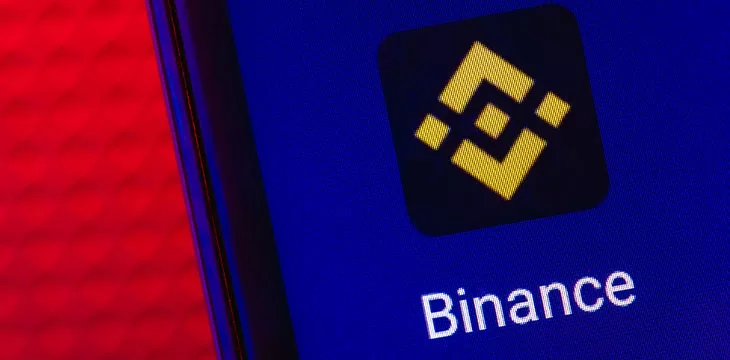|
Getting your Trinity Audio player ready...
|
Binance’s history of facilitating transactions with both Iran and Hamas will increase the exchange’s ‘crypto’ pariah status and doom any chance of negotiating a favorable legal settlement with U.S. authorities.
The world is still struggling to grasp the full ramifications of last weekend’s surprise attack on Israel by the Hamas terror group, but one thing is clear: Binance’s historical willingness to knowingly allow both Hamas and its sponsor Iran to utilize its platform because it boosted Binance’s bottom line now looks even more short-sighted.
This Hamas awareness was detailed in the civil suit filed against Binance by the U.S. Commodity Futures Trading Commission (CFTC) in March. That suit featured internal communications in which the exchange’s then-chief compliance officer Samuel Lim joked about “HAMAS transactions.” When a colleague noted that the size of these transactions could “barely buy an AK47,” Lim explained that terrorists preferred to deal in “small sums” because “large sums constitute money laundering.” No effort was made to interfere with these transactions.
In 2019, Israeli media linked Hamas transactions to multiple Binance accounts. In June 2021, Binance belatedly blocked several Hamas-linked digital wallets, but only after independent analysts went public with evidence of this terrorist financing. In May 2023, Israeli authorities seized 190 Binance accounts believed to belong to Hamas and the Islamic State terror group.
Binance’s ties to Iran were initially detailed in a Reuters report from July 2022 that showed Binance continued to permit Iran-based individuals and entities to trade on its platform despite economic sanctions forbidding such activity. In November 2022, Reuters reported that Iran-based customers had conducted $8 billion worth of transactions on Binance since 2018.
The Wall Street Journal reported Sunday that Iran’s Islamic Revolutionary Guard Corps had been helping Hamas plan the attack on Israel since August and allegedly gave Hamas the green light at a meeting in Beirut the Monday before the attack. Hamas itself has confirmed that it had Iran’s support in launching its attacks on Israel. Iran has denied these reports but it’s unclear how Hamas could have amassed the necessary weaponry without the support of its state sponsor.
Binance was already on thin ice with the U.S. Department of Justice given the exchange’s reputation as a financial conduit for Russian organized crime groups looking to evade western economic sanctions. This led to last month’s comical charade in which Binance announced it was leaving Russia and so Binance’s Russian customers would be diverted to an entirely new exchange backed by unknown entities but conveniently run by former Binance Russia execs.
Whatever leverage Binance thought it had in its negotiations with U.S. authorities over pending criminal charges likely vanished the moment the first Hamas fighter crossed over into Israel. There will be little sympathy for anything other than throwing the book at Binance founder Changpeng ‘CZ’ Zhao, who has for too long promoted an illicit banking network that prioritized criminals and terrorists over their victims.
CZ will likely never leave his current hideout of Dubai of his own free will, although that could make him a target for some equally unforgiving Mossad agents. That is, assuming his UAE hosts—who said they were “appalled” by Hamas taking Israeli hostages—don’t simply hand him over first.
Shortfall, then downfall
Meanwhile, a new filing in the civil suit filed against Binance by the U.S. Securities and Exchange Commission (SEC) this summer is making waves for its cryptic reference to a ‘shortfall’ at Sigma Chain, a Binance-affiliated market maker.
Sigma Chain was one of two CZ-controlled entities—the other being Merit Peak Ltd—the SEC accused Binance of using to (a) wash trade digital tokens on the exchange, and (b) receive transfers worth billions of dollars from Binance.US, the purportedly ‘arms-length’ U.S.-licensed offshoot CZ created to distract U.S. regulators from the even greater crimes at the main Binance.com exchange.
The ‘shortfall’ reference appeared in a heavily redacted deposition by Tao Zhang, Binance.US’s head of clearing, on August 31. Zhang is being quizzed on the transfer of digital assets between deposit wallets and the Binance.US hot wallet, when his interrogator asks: “And so the last communication you had about the Sigmachain [sic] shortfall was last month I think you said?”
The redactions make it unclear precisely what is being referred to here, but the idea of CZ’s market-maker/hedge fund having a hole in its balance sheet offers a disturbing echo of the ‘asset-liability mismatch’ at the FTX exchange and its affiliated market-maker Alameda Research. Both of those companies collapsed shortly after said mismatch grew too large to contain, leaving FTX customers out billions of dollars and founder Sam Bankman-Fried fighting to stay out of jail.
FDUSD: blink and you’ll miss it
That Binance might be on shaky financial footing isn’t necessarily news, as the exchange has been losing fiat on-/off-ramps faster than SBF’s defense team loses court rulings. On September 27, Binance confirmed that its former payment partner Paysafe Payment Solutions had indeed halted EUR deposits and withdrawals as promised earlier this year. Binance urged customers to convert any EUR in their accounts to the USDT (Tether) stablecoin by October 31.
The growing suspicion that Binance isn’t long for this world was on full display in a recent Bloomberg report, which cited info supplied by CCData marking the seventh straight month in which spot trading volume has fallen on the exchange. From a dominant 55.2% share of all spot volume in January, September saw Binance’s market share slip to 34.3% (down more than four points from August). Over the same span, Binance’s share of the derivatives market has fallen from 62% to 51.5%.
But fear not, Binancians, because your favorite exchange has a brand new derivative boondoggle the whole family can enjoy! Introducing Copy Trading, in which ‘crypto’ minnows can mirror the bets, sorry, the futures trades, made by so-called Lead Traders. That’s right, Binancians, never mind all this ‘do your own research’ nonsense, just delegate your financial fate to someone you don’t know in the hopes that they know something.
Oh, and don’t worry, there’s absolutely no evidence that CZ will use any of his 300 personally-controlled ‘house accounts’ on Binance to take the opposite position and then wash-trade token values up or down, depending on which way benefits himself at your expense. Perish the thought.
There is one market in which Binance still reigns supreme—trades based on the FDUSD stablecoin. FDUSD, which debuted on Binance in July, currently boasts a market cap of just over $409 million, yet its 24-hour trading volume was around $1.75 billion on Monday, meaning every single FDUSD in existence is now changing hands more than four times a day.
Nearly all—and we mean 99.96%—of that volume occurs on Binance, and the FDUSD-BTC pair accounts for nearly 92% of all FDUSD trades. So if you’re wondering why the fiat price of BTC seems unnaturally buoyant despite the incessant deluge of negative ‘crypto’ headlines, you can thank CZ and his new & improved wash trading super-soap FDUSD.
The Garden of BNB(den)
Speaking of sketchy tokens with sketchy backing, Binance’s in-house BNB token was the subject of a lengthy Forbes profile last week that goes a long way toward explaining why lies appear to come so easily to CZ. It’s because Binance was spawned of original sin, aka founded upon a lie, and new lies are constantly required to sustain the ruse established by the older lies.
Forbes revealed that, contrary to Binance’s triumphant public declaration that its 2017 initial coin offering (ICO) sold 100 million BNB tokens for around 15¢ apiece, the total number of BNB tokens sold via the ICO was less than 11 million.
Despite CZ’s claim of raising $15 million via the ICO—money that was used to fund the exchange’s development—Forbes estimated that the total sum raised was well under $5 million. The unexpected leftovers meant the 20 million BNB that were originally allocated to Binance’s angel investors—among them, Roger Ver—was quietly doubled to keep everyone happy (and preferably quiet).
As Binance grew and the price of BNB soared as high as $675 by 2021 (currently trading around $206), CZ found himself sitting on an accidental digital goldmine. This proved of immense convenience when CZ’s venture capital arm Binance Labs went looking for projects and had loads of digital magic beans with which to entice developers and founders.
And while Forbes’ calculations suggest CZ still controls around 117 million BNB tokens—over 76% of the total outstanding supply—there are (predictably) all sorts of discrepancies between these figures, the number of BNB that Binance claims publicly in its periodic ‘proof of reserves’ attestations and the total BNB allegedly contained in known Binance wallets. In short, we doubt even CZ knows at this point where the truth lies, despite him being the one who murdered it and dug its grave.
Follow CoinGeek’s Crypto Crime Cartel series, which delves into the stream of groups—from BitMEX to Binance, Bitcoin.com, Blockstream, ShapeShift, Coinbase, Ripple,
Ethereum, FTX and Tether—who have co-opted the digital asset revolution and turned the industry into a minefield for naïve (and even experienced) players in the market.

 04-24-2025
04-24-2025 





